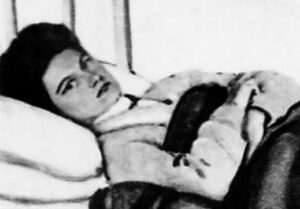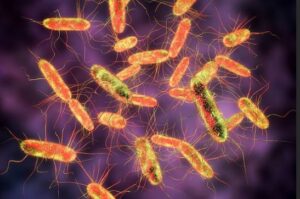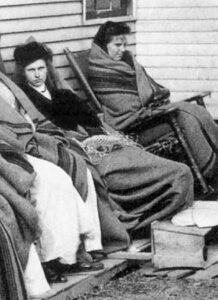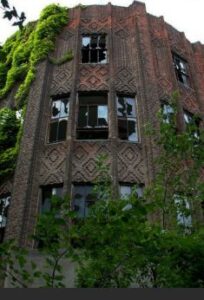
 No disease, especially those that are highly contagious, and for which there is no known cure, is easy to find out that one has, and for those who might have been around the victim of said disease, it can be very frightening. Mary Mallon, who was born September 23, 1869, Cookstown, County Tyrone, Northern Ireland, immigrated to the United States in 1883. Possessing minimal skills, she made her living as a domestic servant, most often as a cook. At some point, she became a carrier of the typhoid bacterium (Salmonella typhi), although no one really knows exactly when or how that happened. Nevertheless, between 1900 and 1907, nearly two dozen people fell ill with typhoid fever in households in New York City and Long Island where Mallon worked. That was the first clue that she was a carrier, because the illnesses often occurred shortly after she began working in each household, then by the time the disease was traced to its source in a household where she had recently been employed, Mallon had already moved on, with no forwarding address. The whole dilemma made it very hard to really track down the carrier, and she knew nothing about it, because she wasn’t ill. It is unusual to be asymptomatic, but not impossible, and Typhoid Mary was one of the unusual ones.
No disease, especially those that are highly contagious, and for which there is no known cure, is easy to find out that one has, and for those who might have been around the victim of said disease, it can be very frightening. Mary Mallon, who was born September 23, 1869, Cookstown, County Tyrone, Northern Ireland, immigrated to the United States in 1883. Possessing minimal skills, she made her living as a domestic servant, most often as a cook. At some point, she became a carrier of the typhoid bacterium (Salmonella typhi), although no one really knows exactly when or how that happened. Nevertheless, between 1900 and 1907, nearly two dozen people fell ill with typhoid fever in households in New York City and Long Island where Mallon worked. That was the first clue that she was a carrier, because the illnesses often occurred shortly after she began working in each household, then by the time the disease was traced to its source in a household where she had recently been employed, Mallon had already moved on, with no forwarding address. The whole dilemma made it very hard to really track down the carrier, and she knew nothing about it, because she wasn’t ill. It is unusual to be asymptomatic, but not impossible, and Typhoid Mary was one of the unusual ones.
Finally, in 1906, after 6 people in a household of 11 where Mallon had worked in Oyster Bay, New York, became sick with typhoid, the home’s owners hired New York City Department of Health sanitary engineer George Soper to investigate the outbreak. Soper’s specialty was studying typhoid fever epidemics, so he was just the man for the job. Of course, Soper was not the only investigator looking for the carrier of the dreaded typhoid disease. Typhoid can usually be cured these days using medications like Ciprofloxacin and Ceftriaxone, but in those days, it meant a death sentence for many people. As the investigation continued, it was concluded that the outbreak had likely been caused by contaminated water. Mallon continued to work as a cook, moving from household to household until 1907. Finally in the right place at the right time, Mallon was located working in a Park Avenue home in Manhattan. The winter of that year, following an outbreak in the Manhattan household that involved a death from the disease, Soper met with Mallon. Following extensive tests, he linked all 22 cases of typhoid fever that had been recorded in New York City and the Long Island area to her. It was this connection that earner her the “unwanted” nickname of Typhoid Mary.
A scared Mallon fled the area, but authorities led by Soper finally overtook her and had her committed to an isolation center on North Brother Island, which is a part of the Bronx, New York. There she stayed, despite an appeal to the US Supreme Court. She was finally released in 1910, when the health department released her on condition that she never again accept employment that involved the handling of food. These days she might have been able to go back to work as a cook, but at that time they couldn’t successfully test for the presence of the bacteria in a person, and with the very real possibility of passing the contagion through food, it was a risk they couldn’t take.
Unfortunately for Mallon, an epidemic four years later, brought her once again into the spotlight. The epidemic 
 was at a sanatorium in Newfoundland, New Jersey, and at Sloane Maternity Hospital in Manhattan. Mallon had worked as a cook at both places. Mallon was at last found in a suburban home in Westchester County, New York, and was returned to North Brother Island, where she remained for the rest of her life. In 1932, she suffered a paralytic stroke that led to her slow death six years later.
was at a sanatorium in Newfoundland, New Jersey, and at Sloane Maternity Hospital in Manhattan. Mallon had worked as a cook at both places. Mallon was at last found in a suburban home in Westchester County, New York, and was returned to North Brother Island, where she remained for the rest of her life. In 1932, she suffered a paralytic stroke that led to her slow death six years later.
Mallon claimed to have been born in the United States, but it was later determined that she was an immigrant. Although she herself was immune to the typhoid bacillus, 51 original cases of typhoid and three deaths were directly attributed to Typhoid Mary. There were also countless more that were indirectly attributed to her as people she infected, passed the illness to people they came in contact with.


Leave a Reply